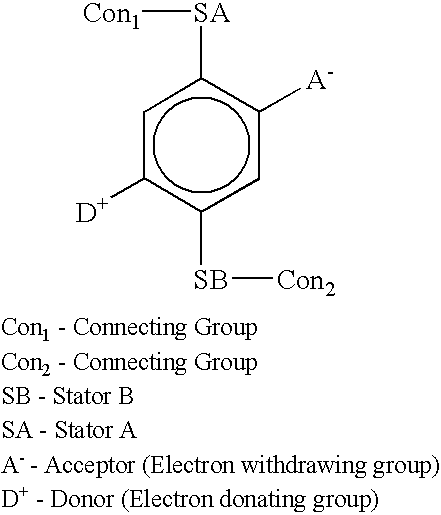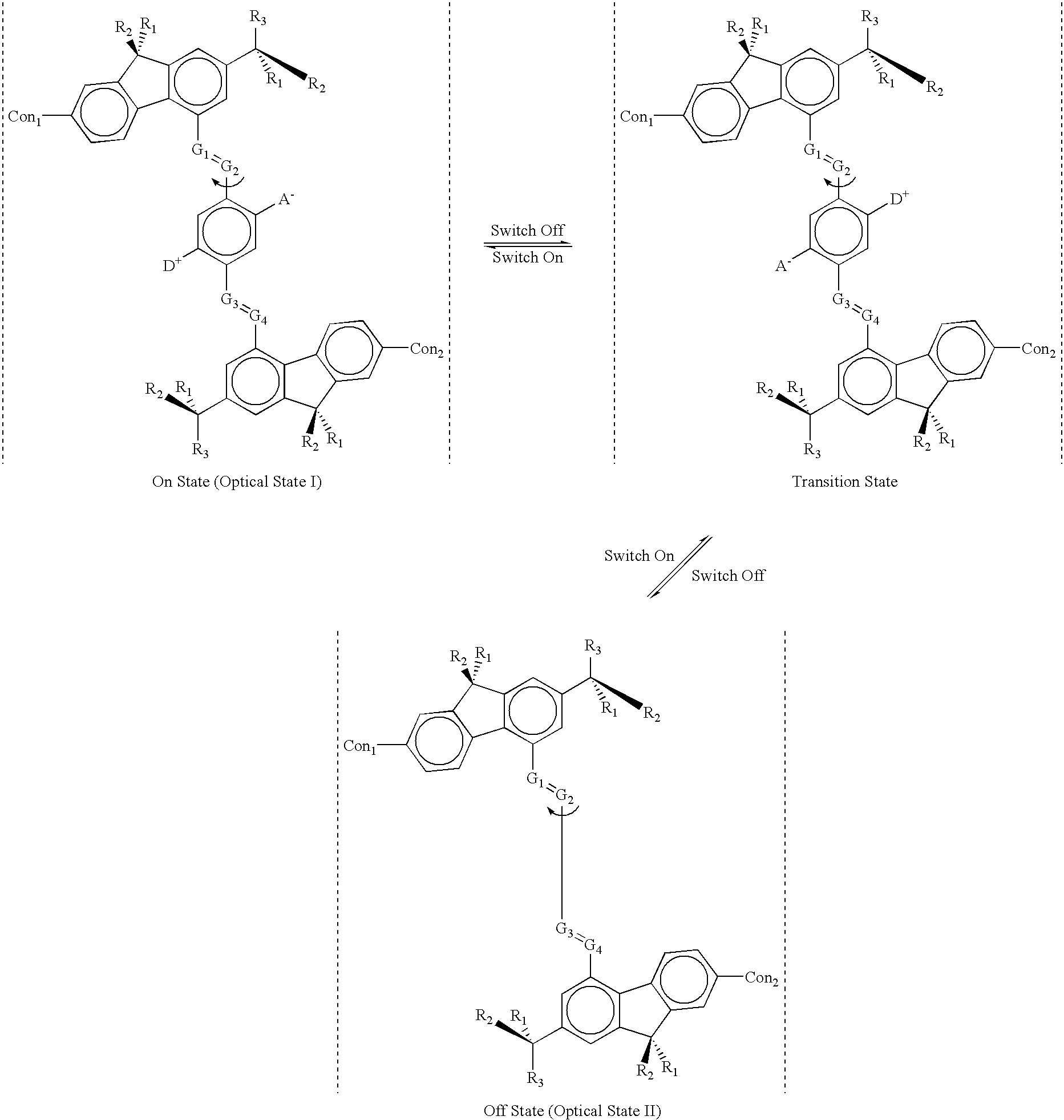Molecular mechanical devices with a band gap change activated by an electric field for optical switching applications
a mechanical device and electric field technology, applied in the field of optical switching systems, can solve the problems of slow switching time of molecules, irreversible switches, and large energy expenditure to toggle switches, and achieve the effect of fast switching time, easy and cheap production
- Summary
- Abstract
- Description
- Claims
- Application Information
AI Technical Summary
Benefits of technology
Problems solved by technology
Method used
Image
Examples
second embodiment
Since each colorant molecule in colorant layer 101 is transparent outside of the colorant absorption band, then multiple colorant layers may be superimposed and separately addressed to produce higher resolution color displays than currently available. FIG. 2 is a schematic illustration of this A high resolution, full color, matrix addressable, display screen 200 comprises alternating layers of transparent electrodes--row electrodes 201, 203 and column electrodes 202 and 204--and a plurality of colorant layers 205, 207, 209, each having a different color molecule array. Since each pixel in each colorant layer may be colored or transparent, the color of a given pixel may be made from any one or a combination of the color layers (e.g., cyan, magenta, yellow, black) at the full address resolution of the display. When all colorant layers 205, 207, 209 for a pixel are made transparent, then the pixel shows the background substrate 103 (e.g., white). Such a display offers the benefit of t...
third embodiment
More specifically, the third embodiment as shown in FIG. 3 comprises a display screen 302, a scanned electrode array 304, and array translation mechanism 301 to accurately move the electrode array across the surface of the screen. The display screen 302 again comprises a background substrate 103, a transparent view through layer 105, and at least one bi-stable molecule colorant layer 101. The colorant layer 101 may include a homogeneous monochrome colorant (e.g., black) or color mosaic, as described herein above. The scanned electrode array 304 comprises a linear array or equivalent staggered array of electrodes in contact or near contact with the background substrate 103. A staggered array of electrodes may be used, for example, to minimize field crosstalk between otherwise adjacent electrodes and to increase display resolution.
In operation, each electrode is sized, positioned, and electrically addressed to provide an appropriate electric field, represented by the arrow labeled "E"...
examples 1 and 2
show two different orientations for switching the molecules. Example 1a below depicts a first generic molecular example for this Model 1. ##STR1##
PUM
| Property | Measurement | Unit |
|---|---|---|
| size | aaaaa | aaaaa |
| heights | aaaaa | aaaaa |
| angle | aaaaa | aaaaa |
Abstract
Description
Claims
Application Information
 Login to View More
Login to View More - R&D
- Intellectual Property
- Life Sciences
- Materials
- Tech Scout
- Unparalleled Data Quality
- Higher Quality Content
- 60% Fewer Hallucinations
Browse by: Latest US Patents, China's latest patents, Technical Efficacy Thesaurus, Application Domain, Technology Topic, Popular Technical Reports.
© 2025 PatSnap. All rights reserved.Legal|Privacy policy|Modern Slavery Act Transparency Statement|Sitemap|About US| Contact US: help@patsnap.com



